Richard Hathaway
What Will Come Next?

The next step in the foundry process is creating a wax. I have the ability to pour small wax pieces at the studio, but most of the time I send the molds to the foundry for them to pour the waxes. Lucas is at the foundry now.
I have decided to pour the wax of Jeanine at my studio. It is small and I really like the green wax that I pour in. After the mold is made and cleaned, as shown in the previous post, then it is sprayed with a mold-releasing agent.
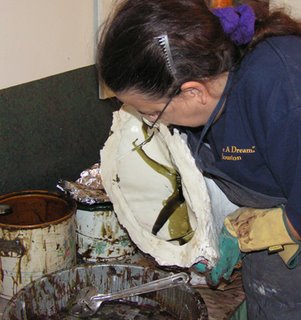
There are two crock-pots with melted wax in them. Each is at a different temperature. I will be pouring three layers with this wax. The first layer is hotter than the other two. It captures the details. The wax is poured in and then I carefully swish the hot wax around the inside of the sculpture. Trying to maneuver this mold is sometimes difficult; because of the weight of the plaster it takes some muscles. The other two layers are poured in the same way. Once the wax cools I can pull the wax from the mold. If I have made the mold correctly there will not be a problem with pulling the wax from the mold.
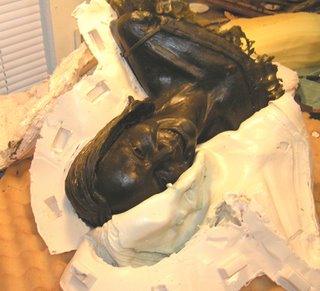
When complete I have a thin, hollow wax replica of my original piece. My apprentices and I will be doing a little more work on these waxes before giving them to the foundry and I’ll have the opportunity to tweak the pieces a bit more. I will do this with the Dick Hathaway sculpture as well. Working the waxes saves a bit more money on the foundry costs.
What is The Foundry Process For The Dick Hathaway Sculpture?
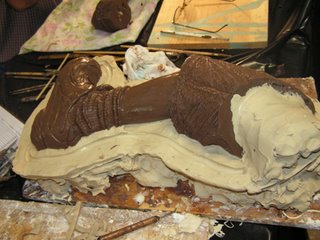
That is a good question, though we have several months before we will be watching the Dick sculpture go through this process. Especially since the date of going to the foundry depends on our raising the $9,000.00 that is needed to cast and ship him.
Each of the sculptures that are going to become a bronze will have to go through this same process of the lost wax method of bronze casting. I’ll go into much more detail with the Dick mold but let’s take a quick look at Lucas.

The first step is making the rubber mold
This job is not easy and after coming off of 2 weeks of very, very long days the two apprentices and myself have sent the Lucas molds off to the foundry.
Let’s look at the Lucas sculpture and its process so you can see what will happen with Dick.
Once the sculpture is approved I have to cut it apart into smaller pieces. Though the Lucas sculpture is only the size of a 5 year old we have cut him apart into eight pieces. The decision of where to cut the Lucas is based on trying to figure out the easiest way to make a mold of him.
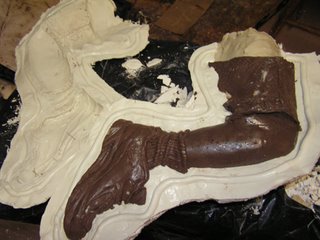
When these pieces are apart I can really see areas that, up until this point, have been difficult for me to work on. Places like under his arms and behind his legs. I love being able to finalize details on these smaller pieces. When the pieces are perfect, or as near perfect as I can get them I need to make a mold of each piece. First I put them on a board and make what will be a seam by separating them with a clay wall. This clay wall becomes a seam after the wax and plaster are applied. The seam gives me two halves so that when we pour a wax in this mold, which is the next step after the mold making process, we will be able to retrieve the wax piece without it breaking. I’ll show some pictures of the Lucas mold making process, but I’ll go into a more detailed description when it comes time to make a mold of Dick.
When the pieces are clayed up with a clay seam I must coat the entire piece very carefully with several coats of rubber that is brushed on.
Once this is cured a thin coat of plaster is put over the rubber. Hemp is mixed in with the plaster to give it strength. This plaster mold is called the mother mold. It holds the rubber in place.
The same process is done with the other side of this piece of sculpture. Of course the clay seam is removed because now I have a rubber seam. If you look carefully at the seam in the first picture I have carved a little gulley in the clay seam. This will make the two pieces match.

Once both sides are done, rubber and then plaster. Flipping the sculpture and then putting rubber and plaster, then the mold can be opened and the original sculpted piece removed. The last photo shows the two halves opened. The gulley created in the seam on the first piece now becomes a key so that the two mold pieces will go together perfectly.
Once the molds are cleaned I send them to the foundry for pouring. I can’t let go of Lucas for too long. I will soon get the wax pieces of Lucas back and be able to finalize some more details.
Making Room For Dick Hathaway-Lucas
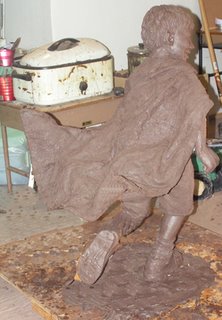
With a sculpture of anyone I depend on the photographs that are provided by the clients. When a child is grown and the photographs that are provided are years apart, it makes little difference, but when you have a little boy of 5 and the photographic reference you have is of him at 3, and 4 years of age, it is very difficult. The change in Lucas in each photograph was drastic.
When I was finished with the sculpture of Lucas It was great to have him running around the studio. The one thing that I learned from this sculpture is that the point in the creative process where I feel comfortable that I have captured Lucas it is different from the families. Apparently, this knowing or feeling like I have him and peace with the sculpture is not about me capturing a likeness, because elements of the face changed. But the peace between the Lucas sculpture and myself came before the approval. It makes it feel like that essence is a bit more mystical.
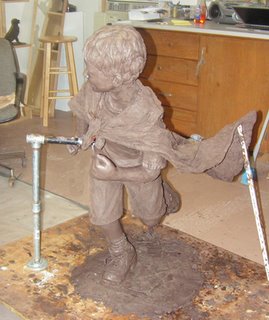
Lucas loved to play with towels and sheets tied around his neck. I believed he liked batman. So I created him in perpetual motion. It reminds me of when we were kids in the 60’s and my brother and I would run around the living room singing that melody in the beginning of the batman series, “na na na na na na na na BATMAN!” Running around pretending to do the BAHM! WAMB! thing to each other. I had forgotten about all of that until just his moment. Thanks Lucas.
Here are some pictures of Lucas
Making Room For Dick Hathaway-Jeanine
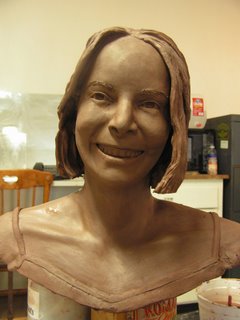
Two sculpture commissions have been in the studio for the past 6-8 months. I have been commissioned to create a life-size bust in bronze of Jeanine, a 26 year old who committed suicide, and a life-size bronze of Lucas, a 5 year old who drowned in a swimming accident.
Because of the nature of the deaths, both of these were difficult sculptures for me to work on. As part of my study at Vermont College I have been examining the process of sculpting the deceased. One element that seems to play a very important roll in the process is my sensitivity to the emotions of my subject and my clients. Some people might term this part of the process psychic empathy, I have been examining it from many different angles than just the paranormal angle. I often can sense and feel things about my subject and the clients that under normal conditions I should not know or feel.
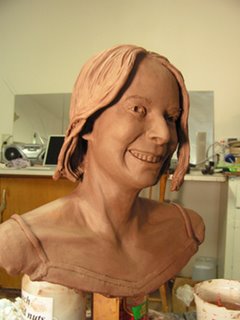
Working through the emotions involved with each commission is as much a part of the process as sculpting. With the commission of Jeanine I had severe feelings of depression that took a great deal of my energy to try to overcome. Somehow walking through those feelings gave me a better sense of who Jeanine was. I am still learning to deal with this part of my talent. Often the emotional aspects that I feel through the sculptures do not feel like they belong to someone else, but instead they feeling like my own. I know it sounds really strange, but it is true. I have almost come to terms with the idea that I can pick up peoples emotions and feelings, they do not have to be near me either. I often feel mom who lives 2,000 miles away and I have also had several feelings from Jeanine’s mom who lives in Alaska- I live in Texas. But I’m not sure about feeling emotions that surround someone who is no longer on this earth. How does this work? This semester’s study leads me into non-local phenomena.
Here are some photographs of the finished sculpture of Jeanine.
Captured Stills Of Dick Hathaway
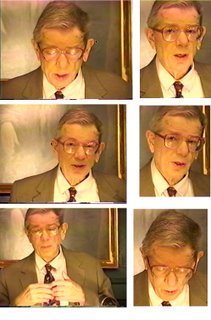
Yesterday, I purchased the program Snapz Pro X to capture still of Dick Hathaway from the Vermont College video. I must have about 40 of them sitting on my desktop waiting to go into Photoshop and be printed out. Today I get back to the armature of Dick.
I hope to also use this program to make the video available on this blog for others to view. It is so wonderful to hear Dick’s voice whenever I want. I am sure others would enjoy listening to him and receiving his inspiration.
Capturing Dick From Video
I am trying to capture images of Dick’s face and hands from a wonderful video that has been provided by Vermont College. This resource will be very valuable for the production of the sculpture of Dick Hathaway. But how do you capture stills from a CD? I am working with a company that provides software that does just that. It is calls Snapz Pro X. I’ll let you know how that goes.
I hope it can be done. The resource of capturing stills will not only help me on Dick Hathaway but I can see how using this type of software can be helpful to many future sculptures. I just need to be sure I can get photographs that I can work from.
They Are Here!
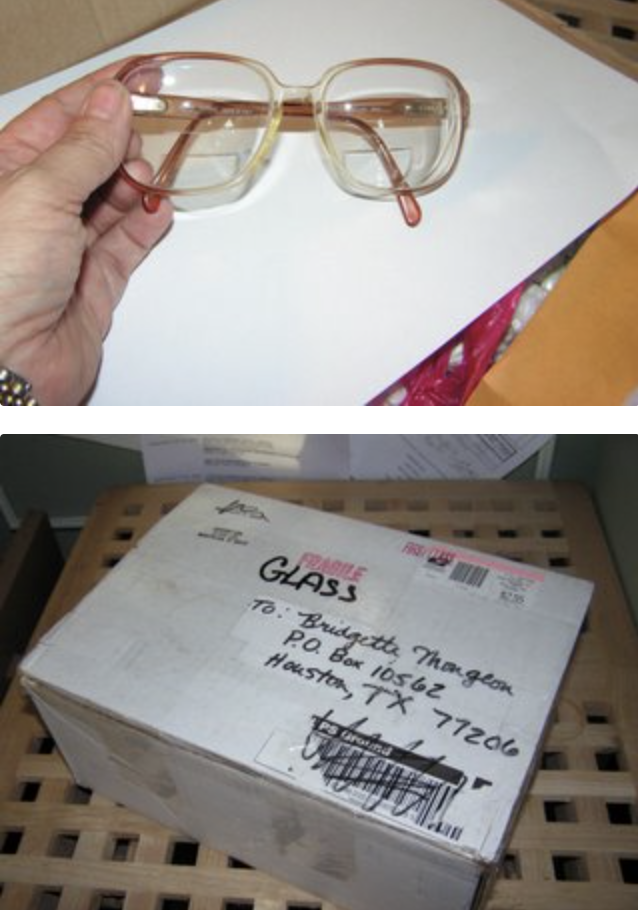
Dick’s glasses came today, my only personal affects that have come of Dick’s. Whenever sculpting posthumous sculpture I cherish the time with personal affects. This is all I have but it is so great. I will make a mold of these glasses and cast them in wax so that they will then be made in bronze. I will need to have these wax glasses for me to be able to work on the bust or head of Dick. So I’ll get on that right away. This is so great!
Is This Dick On The Bench?
Believe it or not this is how the sculpture starts. A bunch of pipe, wire, and spray foam. This is the beginning of the armature. The armature is what the clay is put on. An armature is very important. It needs to be stable but light. A good armature makes an artist’s job easy, a bad armature can become nightmare later through the sculpting process. If I can lighten my armature with foam then it makes for a lighter sculpture and much easier to work with. So yes, for right now this is Dick on the bench
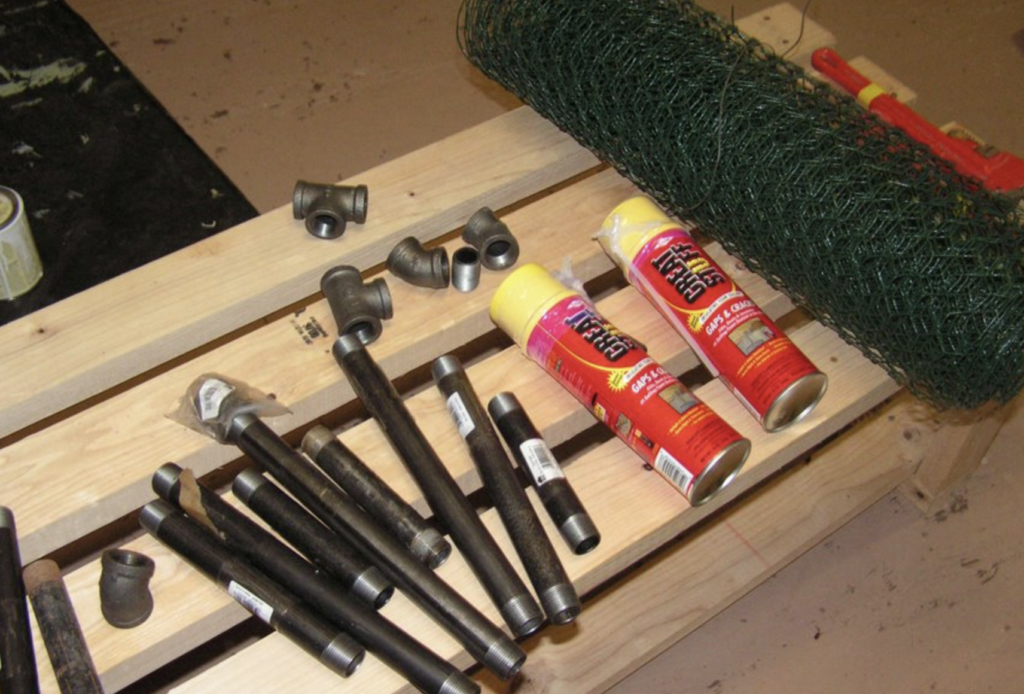
I Am So Excited!
A few days ago I received this e-mail from Nancy, Dick’s daughter.
Hi Bridgette,
I did find glasses and they are on their way to you.
Take care,Nancy
I was thrilled! It is a huge thing, not many people would realize, but it is really important for me and for the sculpture. As you watch the process you will see. Can’t wait!
The Creative Process
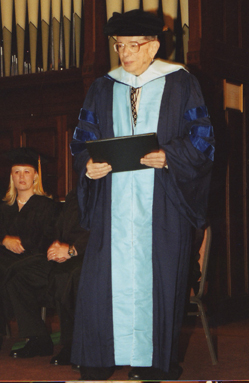
In my first semester at Vermont College as I studied the process of posthumous sculpture for my book “Bringing to Life the Spirit of the Deceased – A Sculptor’s Journey.” I noted there are documented stages of the creative process.
“In the late nineteenth century and early twentieth century, German, physiologist Herman Helmholtz and mathematician Henri Poincaré defined four steps in the creative process: saturation, incubation, illumination and verification. American Psychologist George Kneller later added first insight to the list of stages of the creative process. Artists, scientists, mathematicians, and musicians journey through all these stages as they are creating a piece of artwork, seeking new ideas and solutions or creating music. Each phase of the creative process is a little different.”
In the case of the Dick Hathaway sculpture, first insight might be the idea of creating this work of art. Then I enter the stage of saturation, which that I am in now. I am saturating myself with everything that is Dick Hathaway. I feel that I am quickly entering incubation. Everything that I am finding out about Dick will incubate within me and will continue as I begin sculpting. Illumination comes when I have captured Dick, his likeness and his spirit. Verification is checking everything to make sure it works.
Saturation and verification are something that I can do physically. I can manipulate that part of the creative process. The other three are more mystical in nature. I have spoken with my husband often about this subject. He, too, is an artist. I believe you can welcome and entice the creative process, but you cannot harness it—creativity kind of floats out there. You just try to make all things ready and hope you will “catch the wave and ride it in.”
… In my inner journey and research of this idea of creating posthumous portraiture I wonder, does something or someone meet me in this mystical place of the creative process?”
